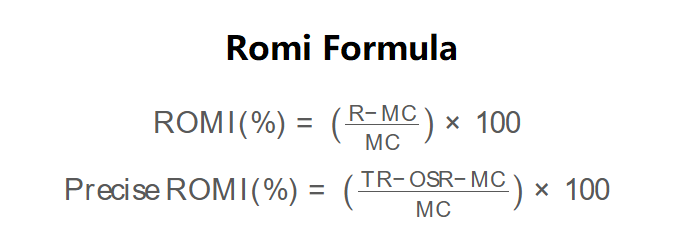 Home
Home
 Back
Back

Definition: This calculator computes the Return on Marketing Investment (ROMI), which measures the effectiveness of a marketing campaign by comparing the revenue generated to the marketing costs. It provides both a basic ROMI and a precise ROMI that accounts for organic sales.
Purpose: It is used by businesses to evaluate the profitability of marketing campaigns, justify marketing budgets, and make data-driven decisions about resource allocation and strategy optimization.
The calculator uses the following formulas, as shown in the image above:
\( \text{ROMI} (\%) = \left( \frac{\text{R} - \text{MC}}{\text{MC}} \right) \times 100 \)
\( \text{Precise ROMI} (\%) = \left( \frac{\text{TR} - \text{OSR} - \text{MC}}{\text{MC}} \right) \times 100 \)
Where:
Steps:
Calculating the online marketing ROI is essential for:
Example 1: Calculate the ROMI for a campaign with total revenue of $2,500, organic sales revenue of $1,000, and marketing costs of $500:
Example 2: Calculate the ROMI for a campaign with total revenue of $10,000, no organic sales revenue provided, and marketing costs of $2,000:
Q: What is a good ROMI?
A: A good ROMI varies by industry, but a ratio of 5:1 (500%) is often considered strong, meaning $5 in revenue for every $1 spent. A ROMI of 0% means you break even, while negative values indicate a loss.
Q: Why calculate precise ROMI?
A: Precise ROMI accounts for organic sales, providing a more accurate measure of the campaign's direct impact by excluding revenue not generated by the marketing efforts.
Q: How can a business improve its ROMI?
A: Businesses can improve ROMI by optimizing campaigns for higher conversions, reducing marketing costs, targeting more relevant audiences, or focusing on channels with higher returns, such as email marketing.